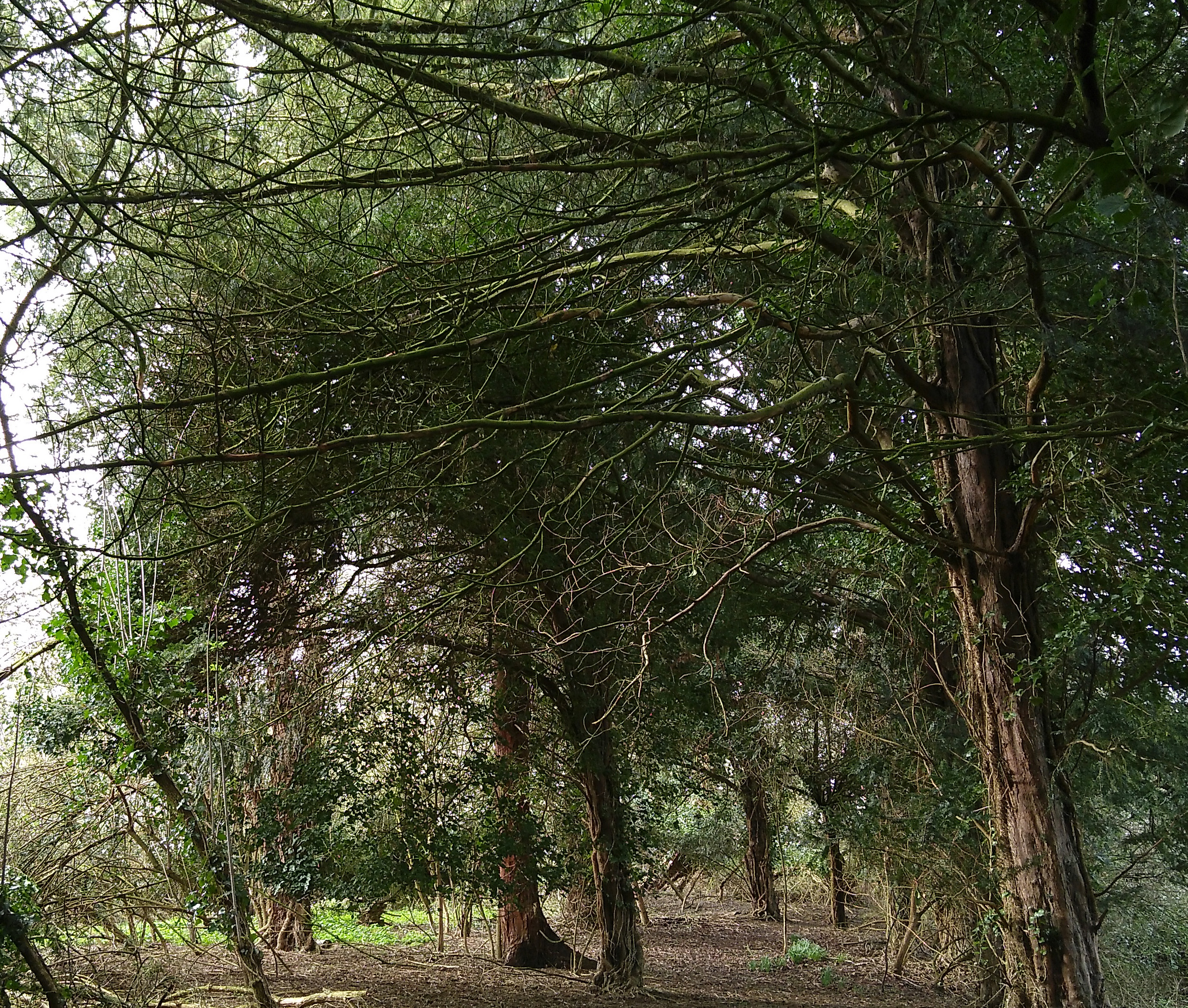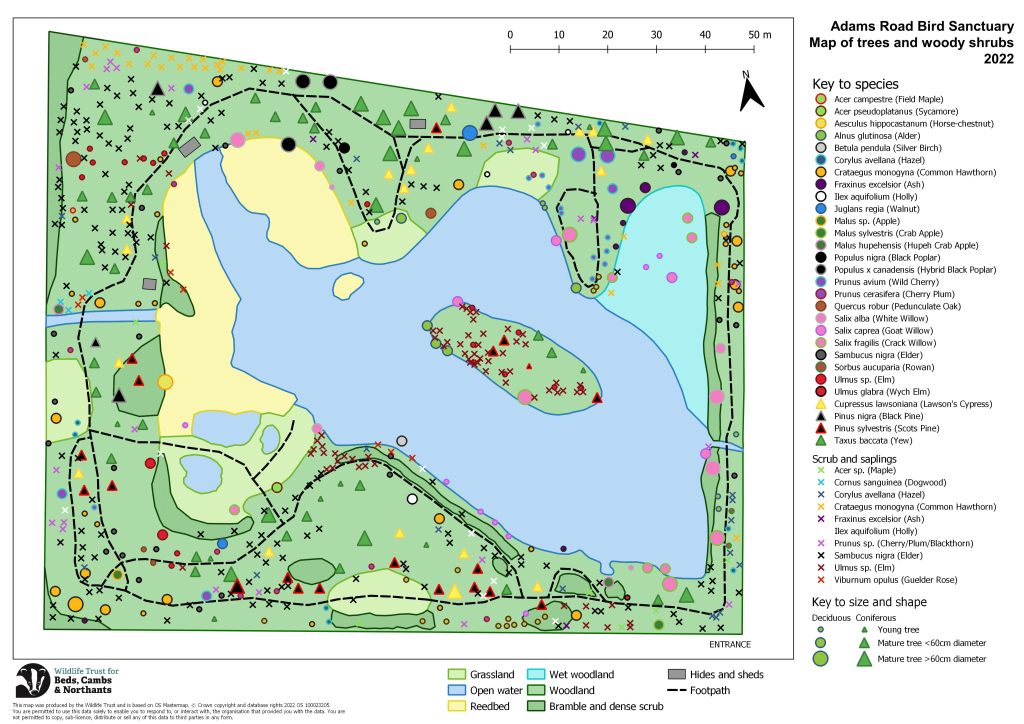
This tree map was made by volunteers and staff at the local Wildlife Trust during 2021 and 2022 and can be seen as a snapshot of the trees at that time. As a dynamic site trees will come and go!

Several versions of the map can be found using the links at the bottom of this page.
Many of the older trees were planted and there is a relatively even mixture of deciduous and coniferous species. Yew Taxus baccata is particularly abundant, with many mature specimens often more wild in form than you might expect from your local churchyard. Scots Pine Pinus sylvestris, Black Pine Pinus nigra and Lawson’s Cypress Cupressus lawsoniana are also relatively abundant, the latter two are not native to Britain, and Scots Pine is here outside its native British range. Although Yew is known from the chalk landscape of the south, here it has also been planted. Unfortunately most of the Lawson’s Cypress are now dying, probably due to the Phytophthora lateralis pathogen. Where safe, these have been left as standing dead wood.
In the north-west area of the site there is a large mature Pedunculate Oak Quercus robur, probably about 300 years old and so likely to pre-date the site as an amenity space; it most likely marks an old field boundary. Both our native Black Poplar Populus nigra (planted) and the more widely planted Hybrid Black Poplar Populus x canadensis are present and the remains of two lovely, large and old specimens of the latter are present on the northern boundary of the site providing a fabulous deadwood habitat for invertebrates and fungi.
A number of Elm Ulmus sp. are present, a species which grows by sending up suckers to form clones – the map reveals that there are around five of these in the Sanctuary and they may indicate where larger, mature Elm trees once stood before succumbing to Dutch Elm Disease. Willows Salix sp. occur along the damp margins of the lake, often fallen and regenerated and many are likely to by hybrids of the three species mapped – White Willow Salix alba, Crack Willow Salix fragilis and Goat Willow Salix caprea; an attempt has been made to put them into these three taxa.
Several mature Hawthorn Crataegus monogyna are scattered about the site, often a tree of hedgerows but some in the Sanctuary have grown to be up to 10m tall trees. A variety of species of plum allow a prolonged blossom season, with Cherry Plum Prunus cerasifera the first to flower starting in late February/early March, followed by Blackthorn Prunus spinosa and Wild Cherry Prunus avium. Once these have finished flowering it is time for the Hawthorn (aka Maythorn) and apples to blossom, and there are several species of apple including Crab Apple Malus sylvestris and Hupeh Crab Malus hupehensis, a native of China.
The map also shows the mosaic of habitats present within the Sanctuary and it is this close association of many different ecological niches which makes the biodiversity of the site so high.
Maps to download and print out
Feel free to download a copy of the map and take along to the Sanctuary with you. Note that this shows trees as they were in 2022, some may have changed!